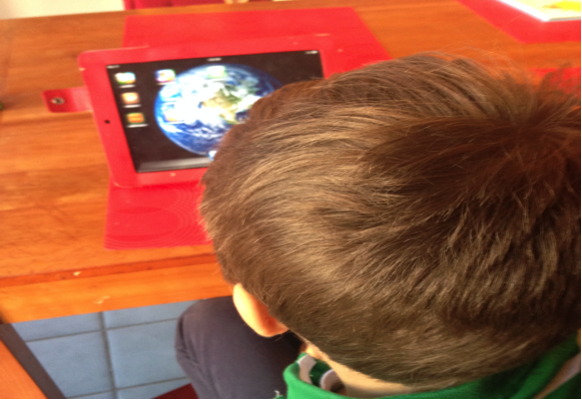Step 2.3 Show the video model
 VIDEO: Showing the Video Model
VIDEO: Showing the Video Model
Many young children with ASD will sit down to watch the video without any difficulty; however, some may need additional prompting and reinforcement to attend to the entire video. The adult may have to sit and watch the video with the child. A high level of enthusiasm and excitement by the adult is a natural way to reinforce the child to sit and attend to the video.

- Some children may need a prompt to focus on key behaviors demonstrated by the video (see prompting module for additional information), which is why minimizing distractions is important.
- Showing the video will visually demonstrate or teach the target behavior to the young child with ASD. If the child is irritable or has difficulty sitting, you may need to determine the cause or show the VM at a later time.
Ideally, the child should be able to watch the entire video and then execute the desired behavior. In most cases, the video should only be shown once before assessing if the targeted behavior is learned. The practitioner or parent can then observe (collect data) to see if the child is successful in executing the targeted behavior and record what was accomplished.

If the skill is complex and is broken down into steps, each step should be viewed, then demonstrated by the child. The entire behavior or skill sequence can be executed once all of the steps are learned.
Remember, it is important to use the same procedures during the implementation phase as those that were used when the toddler was introduced to the video viewing process (i.e., incorporating the VM viewing device). The only difference is that during the initial introduction, the young child watched something other than the video model (their favorite TV program, etc.).
During implementation, the young child will watch the video model completing the task or skill that is to be learned.


